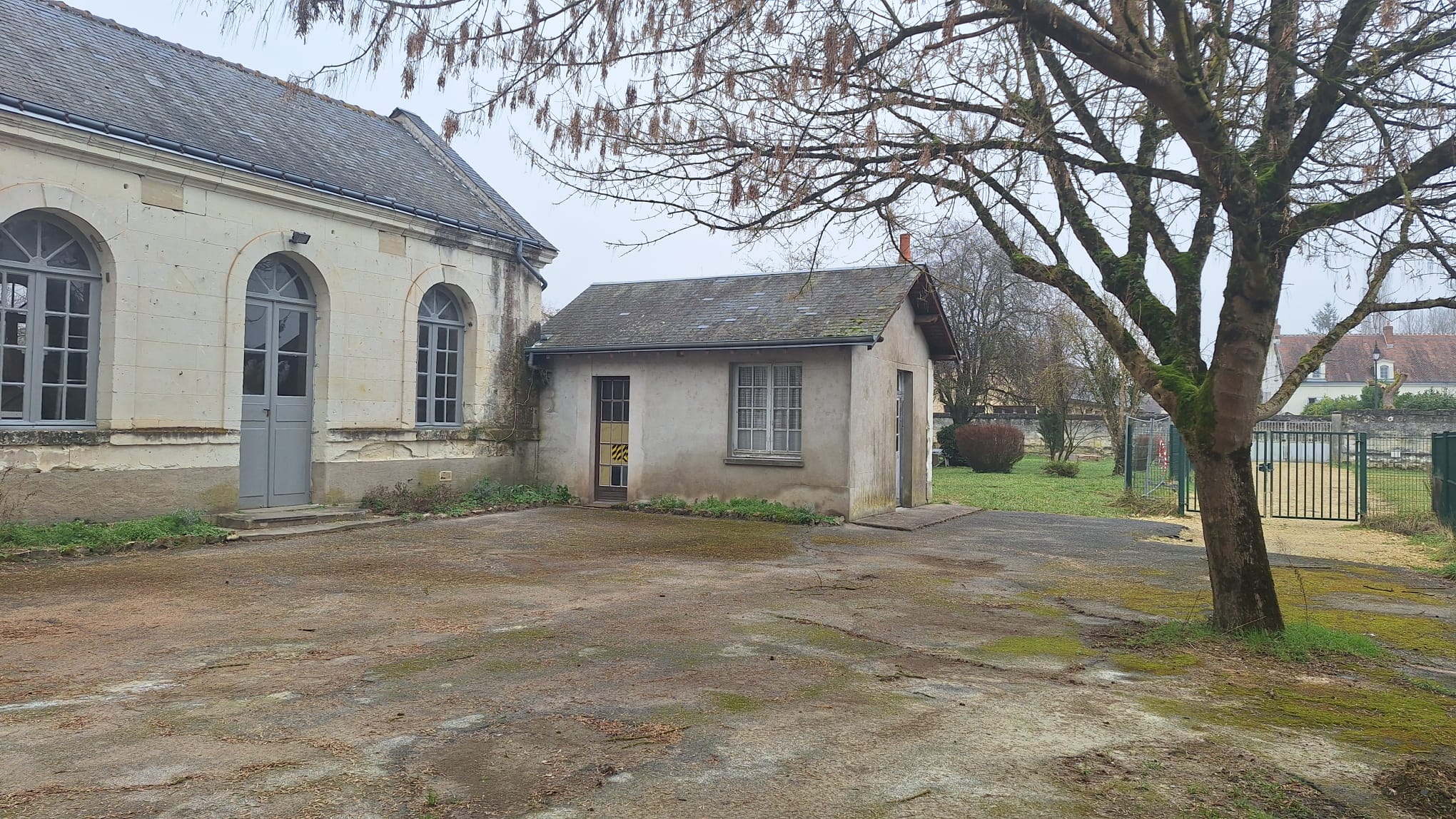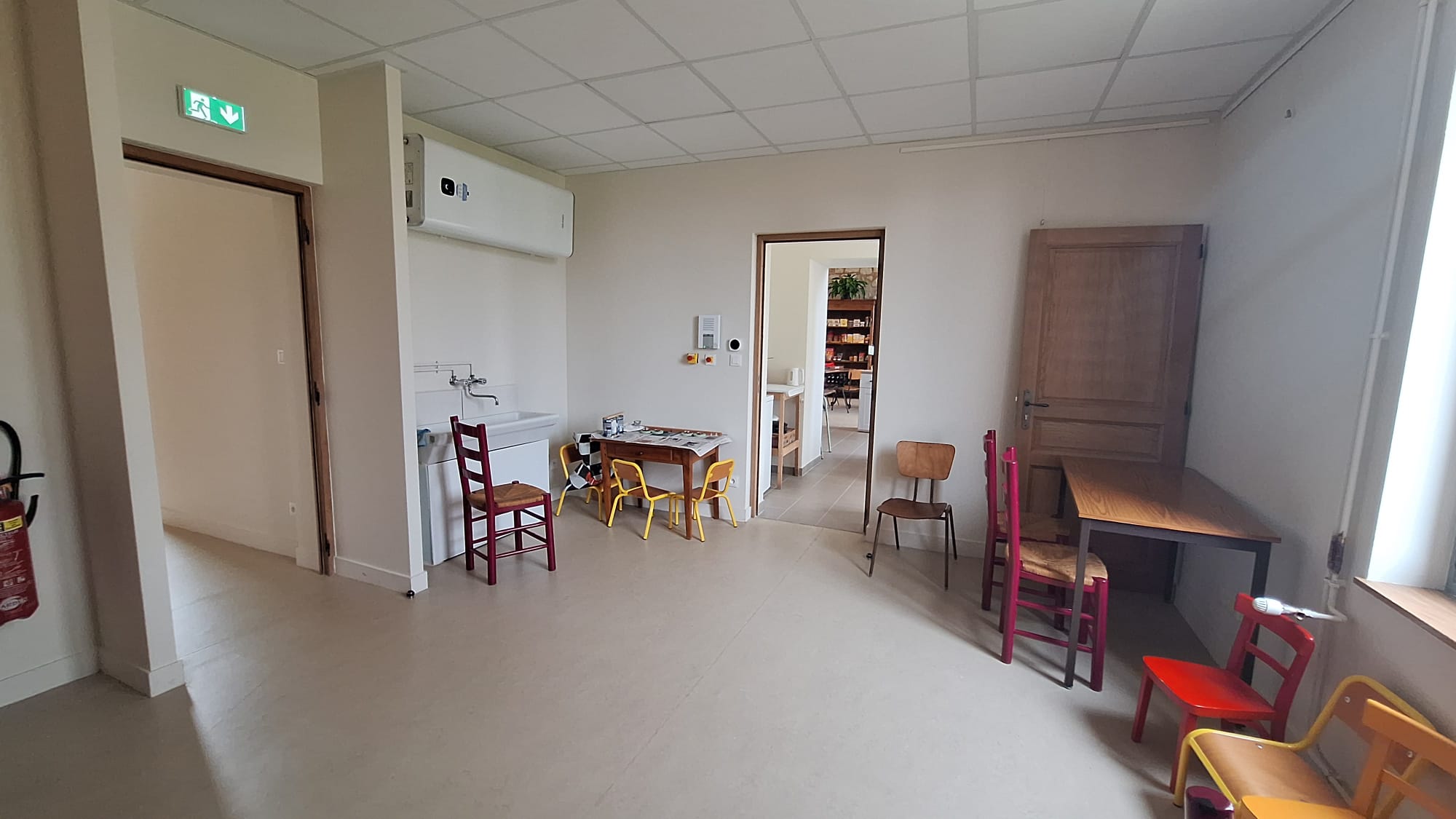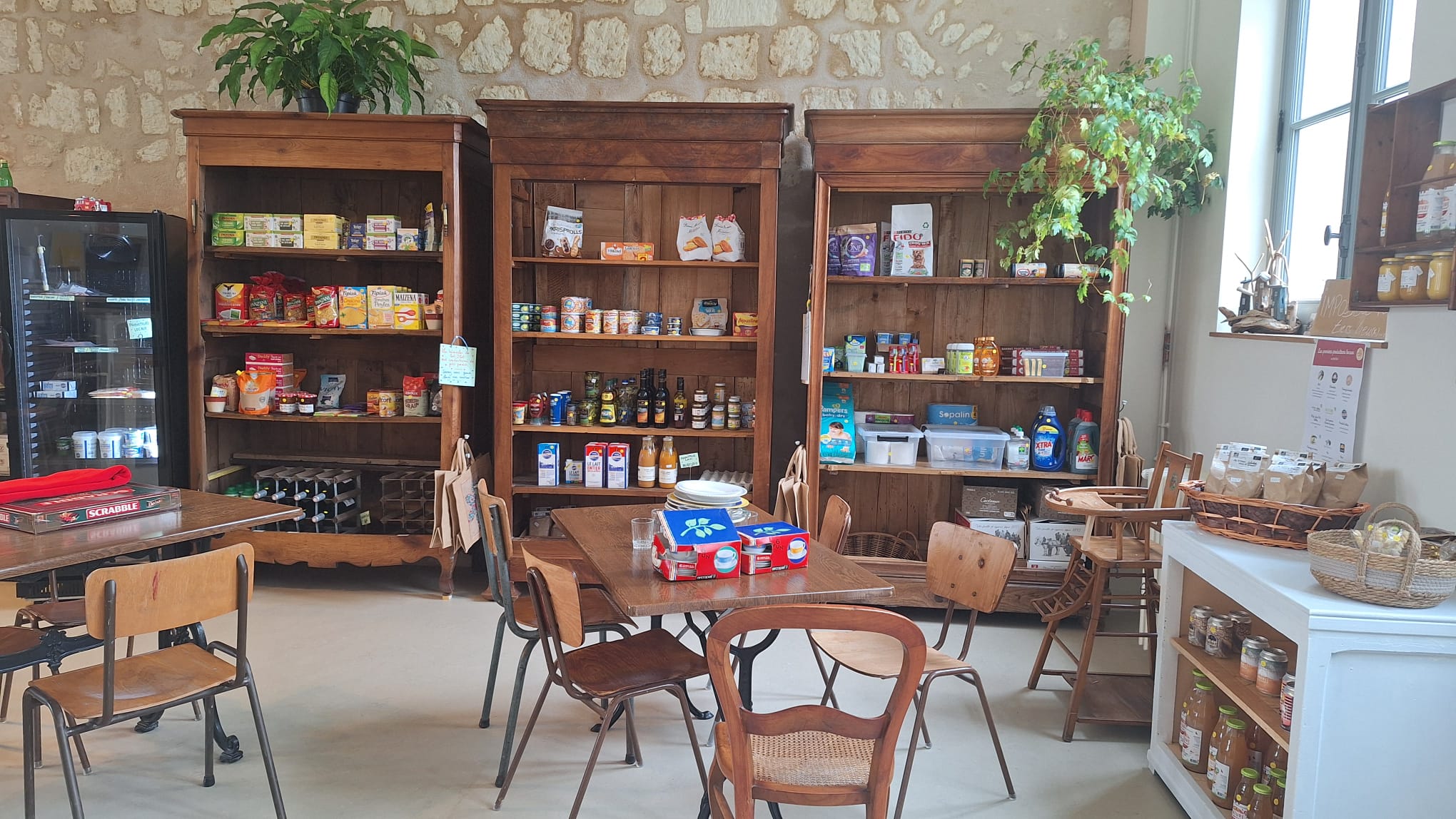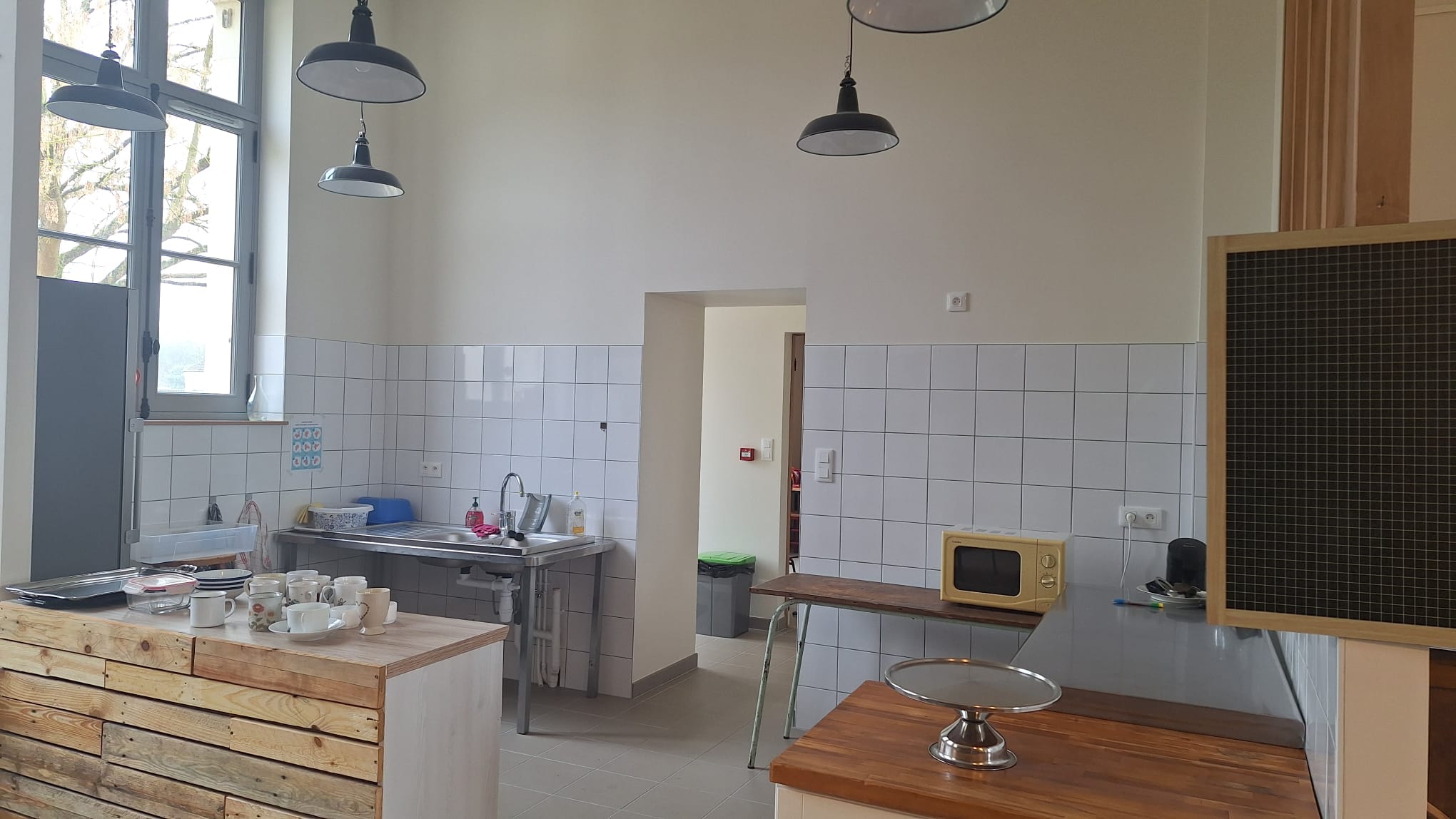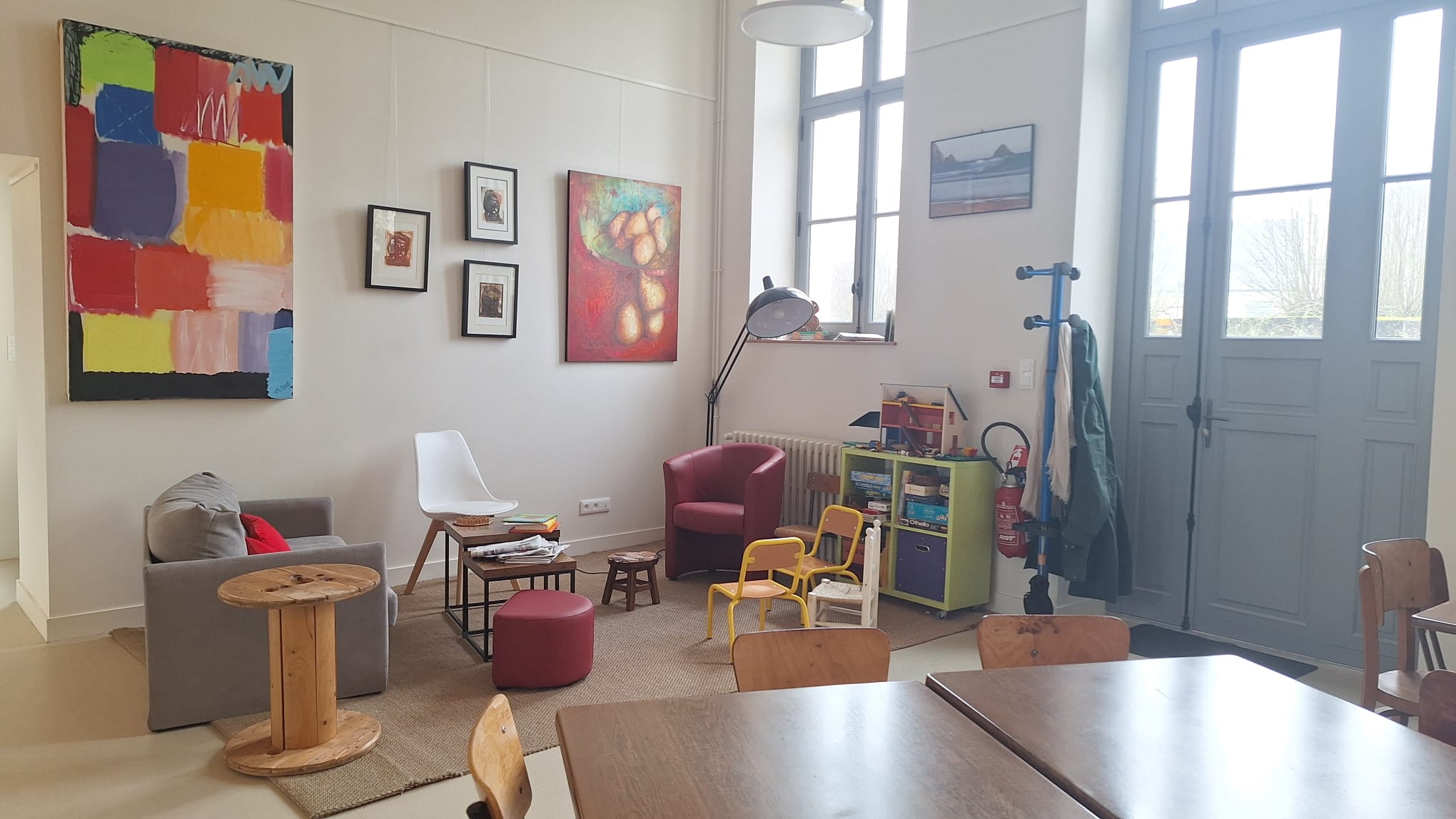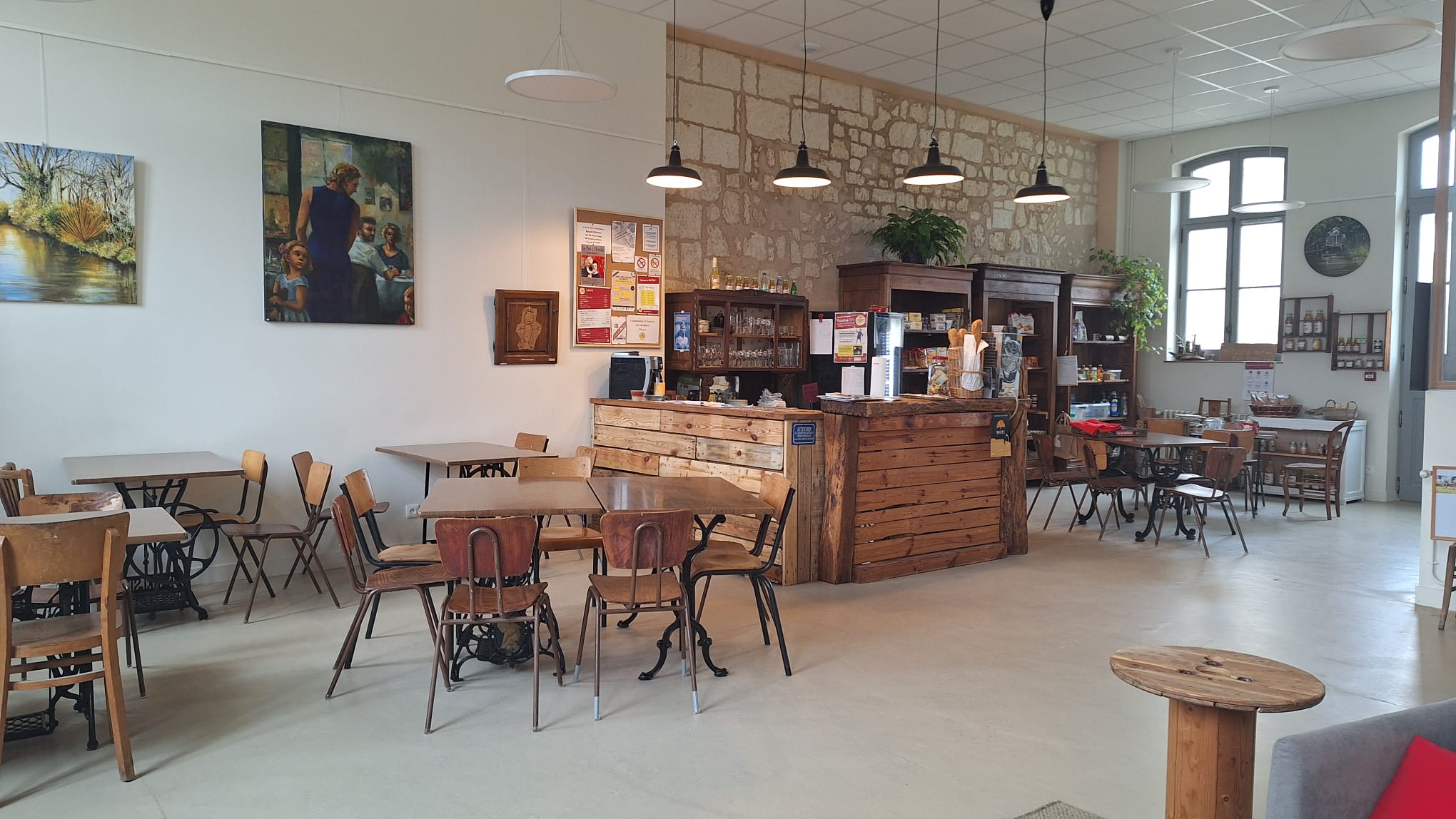Third place project
A third place in Beaulieu
In Beaulieu-lès-Loches, many residents want to see a revival of activity in the heart of the city. Also, a joint work was initiated by the municipality and an association. The municipality is responsible for the building (acquisition, rehabilitation and upgrading), while the association is responsible for the animation. The "Conventuals" would be a "third place" of exchange and meeting, including a grocery store and a café associative, workshops and a collective garden.
France
4, place du Maréchal Leclerc 37600 Beaulieu-lès-Loches
Prototype level
Yes
Yes
Yes
No
No
37020: Beaulieu-lès-Loches (FR)
Beaulieu-lès-Loches, a commune of 1750 inhabitants in the Centre-Val de Loire (Indre et Loire, France), has integrated the national programme "Petites Villes de Demain" to implement strategic guidelines and have adequate resources. A mission of commercial attractiveness made it possible to analyse the adaptability capacities. It proposed courses of action that respond to the potential and ambition of the territory and the municipality, while defining the conditions for success and the levers of interventions.
In Beaulieu-lès-Loches, many citizens want to see a revival of an activity in the heart of the city, allowing them to do their daily shopping, offer their skills, exchange, inclusive and sustainable. Also, a joint work was initiated by the municipality and an association created for the project.
The municipality renovates the building (acquisition, rehabilitation and upgrading), while the association takes over the animation. The building called "Conventuels" would be a "third place" of exchange and meeting, including a grocery store and a café associative, workshops and a collective garden.
This project is part of the overall revitalization project for the city, which has long been working on heritage and cultural development. The challenge is to do it together. We need to find people who have the skills and can pass them on, not for others but with others, to give them autonomy.
- The action taken is therefore the creation of an intergenerational place.
- A place where the reception and action of all are possible, inhabitants of the city and agglomeration, but also tourists.
- Driven by a citizen dynamic.
- The planned place is in the center of the town, on the main square, which suffers from its grandiose aspect and needs to be humanized. Attractiveness, financial balance, user loyalty and openness to tourists are issues to be taken into account.
In Beaulieu-lès-Loches, many citizens want to see a revival of an activity in the heart of the city, allowing them to do their daily shopping, offer their skills, exchange, inclusive and sustainable. Also, a joint work was initiated by the municipality and an association created for the project.
The municipality renovates the building (acquisition, rehabilitation and upgrading), while the association takes over the animation. The building called "Conventuels" would be a "third place" of exchange and meeting, including a grocery store and a café associative, workshops and a collective garden.
This project is part of the overall revitalization project for the city, which has long been working on heritage and cultural development. The challenge is to do it together. We need to find people who have the skills and can pass them on, not for others but with others, to give them autonomy.
- The action taken is therefore the creation of an intergenerational place.
- A place where the reception and action of all are possible, inhabitants of the city and agglomeration, but also tourists.
- Driven by a citizen dynamic.
- The planned place is in the center of the town, on the main square, which suffers from its grandiose aspect and needs to be humanized. Attractiveness, financial balance, user loyalty and openness to tourists are issues to be taken into account.
Proximity
Participatory
Renovation
Built heritage
Inclusive
The valorization of heritage is major, but other aspects are equally important for the daily lives of citizens such as conviviality, school, business, associations, roads or active mobility,...
The renovation of the building has been designed for the long term so that its use is flexible and multiple. If the project is to install a third place, the activities of this entity can evolve over time and diversify. Different spaces exist, such as a kitchen area, meeting rooms, an exhibition space, storage... each space can be rethought according to present and future needs.
In the long term, this dual association between the municipality and the association aims to anchor the principle of third place in mentalities. In rural areas, a third place is often hybrid, mixing the genders to better mix audiences, meet needs and have chances of sustainability: social and inclusive, economic and functional, entrepreneurial and innovative, technological and collaborative, Cultural and lively...
It is a place of meetings and sharing, open and unifying for the territory in which all citizens and all actors of the territory can act, build, work, express themselves, relax and learn.
The renovation of the building has been designed for the long term so that its use is flexible and multiple. If the project is to install a third place, the activities of this entity can evolve over time and diversify. Different spaces exist, such as a kitchen area, meeting rooms, an exhibition space, storage... each space can be rethought according to present and future needs.
In the long term, this dual association between the municipality and the association aims to anchor the principle of third place in mentalities. In rural areas, a third place is often hybrid, mixing the genders to better mix audiences, meet needs and have chances of sustainability: social and inclusive, economic and functional, entrepreneurial and innovative, technological and collaborative, Cultural and lively...
It is a place of meetings and sharing, open and unifying for the territory in which all citizens and all actors of the territory can act, build, work, express themselves, relax and learn.
The building used for the installation of this third place is an old conventual building, from the history of the former Benedictine abbey that made the reputation of the city and the basis of its existence. Preserved since the eleventh century, the use of this place is a continuation in the history of the town and the means to ensure the durability of the building. The exterior of the building corresponds to local architecture (tuff and slate) and blends into a large ensemble under the prescriptions of the Bâtiments de France.
The chosen centrality, on the main square of the city allows to launch and to dynamize an area of life on the square. The choice to renovate this building offers a welcoming and lively place for locals as well as tourists. A form of landmark on an impressive and sometimes impersonal monumental space. It provides a central place for citizens to gather and a landmark for local tourism.
The chosen centrality, on the main square of the city allows to launch and to dynamize an area of life on the square. The choice to renovate this building offers a welcoming and lively place for locals as well as tourists. A form of landmark on an impressive and sometimes impersonal monumental space. It provides a central place for citizens to gather and a landmark for local tourism.
The entire renovation of the building has been designed to allow access to as many people as possible. All standards for people with reduced mobility have been ensured without denaturalizing the building. Essential access that also adapts to the local population, which is mostly elderly and whose movement can be difficult.
In parallel, the association responsible for the animation of the place has approached local reception structures to propose workshops or events for people with mental or physical disabilities (Medical-educational institute, departmental association of parents and friends of people with mental disabilities).
The site also hosts social structures such as the Local Mission, which carries out a public service mission with an essential objective: to accompany young people aged 16 to 25 in their career and social integration. Or more specific mobile services such as the "LAP’S", Lieu d'Accueil Parents Sud Touraine, to meet the needs of families.
In parallel, the association responsible for the animation of the place has approached local reception structures to propose workshops or events for people with mental or physical disabilities (Medical-educational institute, departmental association of parents and friends of people with mental disabilities).
The site also hosts social structures such as the Local Mission, which carries out a public service mission with an essential objective: to accompany young people aged 16 to 25 in their career and social integration. Or more specific mobile services such as the "LAP’S", Lieu d'Accueil Parents Sud Touraine, to meet the needs of families.
The place is based on a contract between individuals, a collective and the general interest. The third-place approach takes into account both the paths of people, the different collective aspects crystallized in a place and the dynamics of transformation of the territory which is a lever for mobilization. The third place is a tool for local development.
The genesis comes from several public meetings where a question was asked: "What do you think of the creation of a third place?". Question to which the inhabitants replied with malice: "What do we need?".
The first working meeting, organized by the municipality with interested parties, was held in October 2022 (approximately 50 people). A tight working group has been set up, which reflects on its objectives, the issues, governance, implementation and involvement of each other,...
Subsequently, the association, with collegial management, "A Third-Place for Beaulieu" was created in February 2023. Regular meetings were held, as well as visits to similar third places. The association is open to all residents who wish to participate, for a short or long time and for different projects (DIY, management of the place, animations, administrative...).
The genesis comes from several public meetings where a question was asked: "What do you think of the creation of a third place?". Question to which the inhabitants replied with malice: "What do we need?".
The first working meeting, organized by the municipality with interested parties, was held in October 2022 (approximately 50 people). A tight working group has been set up, which reflects on its objectives, the issues, governance, implementation and involvement of each other,...
Subsequently, the association, with collegial management, "A Third-Place for Beaulieu" was created in February 2023. Regular meetings were held, as well as visits to similar third places. The association is open to all residents who wish to participate, for a short or long time and for different projects (DIY, management of the place, animations, administrative...).
At local level, the works are carried out by the municipality and legally authorized by declaration of work and authorization of works. The Centre-Val de Loire region and the French government are supporting this project with various grants for renovation work.
The association decided to ask for support from Alter’Incub, a "social innovation incubator" supported by the Centre-Val de Loire region and the regional union of Scop and Scic in order to support the creation of companies with a strong social impact. From their emergence to their implementation, Alter'Incub supports projects whose innovation is at the service of the collective interest and the territory. Integrating the Alter'Incub journey means benefiting from tools provided by a network of experts and a thriving community, rich in project leaders who wish to be visible, learn from each other’s experiences and share! For the municipality, this support of the association by Alter’Incub is a guarantee of a mature, viable and organized project.
The association decided to ask for support from Alter’Incub, a "social innovation incubator" supported by the Centre-Val de Loire region and the regional union of Scop and Scic in order to support the creation of companies with a strong social impact. From their emergence to their implementation, Alter'Incub supports projects whose innovation is at the service of the collective interest and the territory. Integrating the Alter'Incub journey means benefiting from tools provided by a network of experts and a thriving community, rich in project leaders who wish to be visible, learn from each other’s experiences and share! For the municipality, this support of the association by Alter’Incub is a guarantee of a mature, viable and organized project.
In order to ensure the coordination of the third-place project between the partners, a monitoring committee is set up between the municipality and the association responsible for the animation of the place.
The monitoring committee comprises the mayor and an elected representative, four representatives of the association, the general secretary of the town hall, the head of technical services, the supervisor of the works and may be associated with the representatives of the partners.
The monitoring committee meets at least once a month to advance the project and is particularly concerned with the layout of the third site, the design of the spaces, the choice of materials, colours and permanent decoration elements, the financing of the works, the financing of the association, the partnerships that the association may consider and the financial aspects of the project.
At the end of the work, a third-party rental agreement will be signed between the municipality and the association. The latter will ensure full and complete management of the place. The monitoring committee will be maintained for a minimum of one year, with meetings every three months to best accompany the launch of activities and take stock of the operation of the third place.
The monitoring committee comprises the mayor and an elected representative, four representatives of the association, the general secretary of the town hall, the head of technical services, the supervisor of the works and may be associated with the representatives of the partners.
The monitoring committee meets at least once a month to advance the project and is particularly concerned with the layout of the third site, the design of the spaces, the choice of materials, colours and permanent decoration elements, the financing of the works, the financing of the association, the partnerships that the association may consider and the financial aspects of the project.
At the end of the work, a third-party rental agreement will be signed between the municipality and the association. The latter will ensure full and complete management of the place. The monitoring committee will be maintained for a minimum of one year, with meetings every three months to best accompany the launch of activities and take stock of the operation of the third place.
The heart of this initiative is the link between the municipality and citizens. The setting up of public meetings to think through the project and the subsequent creation of an association of residents to set up this initiative is a pioneering practice for a rural municipality. This coalition ensures a project thought by citizens and for citizens.
The project stems from the political will to animate the town centre. In 2021, the idea of renovating the building emerged with a first estimate of the work carried out. The following year, the consultation with local residents and actors began and the first draft of the association carrying the animation of the third place.
In 2023 the municipality chooses the project manager for the works and the association "A Third Place for Beaulieu" is created. After receiving the regulatory approvals and acquiring the garden and associated buildings, work is started at the end of the year.
Pending the completion of the works and installation in the place, the association has hosted several events to get known by citizens and present the project in a more concrete way. They participated in various communal events and created their own events (concerts, meetings). They also linked up with other local associations to support and make themselves known.
In 2023 the municipality chooses the project manager for the works and the association "A Third Place for Beaulieu" is created. After receiving the regulatory approvals and acquiring the garden and associated buildings, work is started at the end of the year.
Pending the completion of the works and installation in the place, the association has hosted several events to get known by citizens and present the project in a more concrete way. They participated in various communal events and created their own events (concerts, meetings). They also linked up with other local associations to support and make themselves known.
Many rural municipalities in France have empty premises, difficult to operate and yet in the heart of the city. For the installation of a third place this constant is indispensable but accessible. The principle of third place is itself a reproducible element and has been widely supported for several years. Combining this will and the installation in a place to renovate offers ways to be helped in the works and to set up the project itself.
The will to do and work together with citizens is a political will that benefits all. Involving the local community can be a challenge but also the real way to create a place or event that meets expectations.
The will to do and work together with citizens is a political will that benefits all. Involving the local community can be a challenge but also the real way to create a place or event that meets expectations.
The creation of the third place is a co-construction between the municipality and the citizens' initiative association that ensures the governance of this place of listening and dialogue. This association is the result of the inhabitants, whether they are from Beaulieu-lès-Loches or the nearby territory. The careful look of the municipality ensures that actions and projects are in the collective interest, with activities adapted to the population and allowing to cope with ecological and social transitions resulting from listening to the needs of users. The establishment of a grocery store in particular alleviates the difficulty for some citizens to move to food shops that are only in the nearby city.
The renovation work was completed in November 2024. The municipality has been able to inaugurate the site, and the association is preparing to integrate the premises. The association has been very active since its creation, it already plans to organize many events in addition to permanent services such as grocery and coffee associations. The opening of the site to the public in 2025 will allow the initiative to be fully implemented and made known by citizens.
The design of the reception area is designed to save money by the association, with materials and equipment for recycling. The furniture is made of donations and recoveries, as well as small elements (cups, glasses, plates...). Several pieces of furniture were made from scratch by the association’s volunteers, using recycled old doors or transport pallets. These small workshops were offered to several young people of the departmental Association of parents and friends of people with mental disabilities and the Local Mission. In all, about ten young people helped and participated in the development.
Due to the work done to integrate citizens into the thought of this initiative and through the strong presence of the association in all local events, the opening of the place is particularly acclaimed by the inhabitants. The opening and activity of the third place must be a major event for Beaulieu-lès-Loches. The grocery corner also appears as a relief for some citizens, reassured to have a sales area. It is a comfort of life for citizens that will open.
The start of the tourist season from May 2025 will also be a new stage for the initiative, allowing us to assess whether this new point of departure, information, exchanges is appropriate, useful or essential.
The design of the reception area is designed to save money by the association, with materials and equipment for recycling. The furniture is made of donations and recoveries, as well as small elements (cups, glasses, plates...). Several pieces of furniture were made from scratch by the association’s volunteers, using recycled old doors or transport pallets. These small workshops were offered to several young people of the departmental Association of parents and friends of people with mental disabilities and the Local Mission. In all, about ten young people helped and participated in the development.
Due to the work done to integrate citizens into the thought of this initiative and through the strong presence of the association in all local events, the opening of the place is particularly acclaimed by the inhabitants. The opening and activity of the third place must be a major event for Beaulieu-lès-Loches. The grocery corner also appears as a relief for some citizens, reassured to have a sales area. It is a comfort of life for citizens that will open.
The start of the tourist season from May 2025 will also be a new stage for the initiative, allowing us to assess whether this new point of departure, information, exchanges is appropriate, useful or essential.

